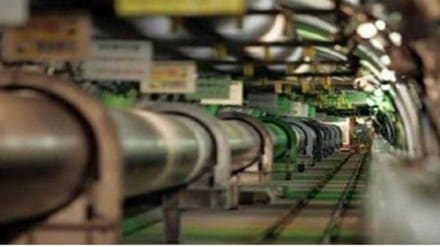The national green hydrogen mission, a key project for ensuring energy transition, is also the cornerstone of India’s climate action targets for 2030 as well as the 2070 ‘Net Zero’ goal. In that context, the Union Cabinet’s decision on Wednesday to approve an initial capital outlay of Rs 19,700 crore for green hydrogen is a good beginning towards achieving the mission’s 2030 investment target of `8 trillion, and a hydrogen production capacity of 5 million metric tonnes (MMT) that would create 600,000 jobs. Green hydrogen, which is produced through the electrolysis of water using renewable energy sources, has the potential to greatly reduce carbon emissions. It is also estimated to result in a cumulative reduction in fossil fuel imports of over `1 trillion and abatement of nearly 50 MMT of annual greenhouse gas emissions.
Also read: New pension scheme with assured returns by May-June
There is a reason for the government’s enthusiasm. Green hydrogen is now seen all over the world as a pillar of most net-zero emission scenarios. It’s a no-brainer that if hydrogen were adequately available, it would be something of a decarbonisation wonder. It can make carbon-free fuels for transportation and heating, and power some energy-intensive industries that can’t easily be electrified, such as the manufacture of steel or fertiliser. That explains why the government has already promised faster clearances for setting up renewable energy plants for hydrogen production. Any surplus electricity from such plants can be ‘banked’ with the local utility for up to 30 days. If a hydrogen producer wishes to buy electricity from a renewable energy company, ‘open access’ permission would be given within 15 days of application; and if the energy supplier is in another state, inter-state transmission system charges would be waived for a period of 25 years.
The problem is that green hydrogen is not commercially viable at present. The current cost in India is around `350-400 per kg; it is likely to become viable only at a production cost of under Rs 100/ kg. The technology used in the production and use of hydrogen is at a nascent stage in India, and is therefore expensive. This, in turn, increases the cost of hydrogen production and will require a lot of investment. In addition to the higher manufacturing cost, there is higher maintenance cost as well. So far, creating a hydrogen economy has been a chicken-and-egg problem as consumers seek lower costs which could be possible with scalability and large investments, but for those, producers seek assured demand. The good news, according to TERI estimates, is that by 2030 green hydrogen will become increasingly competitive, coinciding with a decline in electrolyser costs and the increasing load factors of solar plants. These are the factors why a host of public sector and private companies have already announced big plans for green hydrogen production.
Also read: Lupin launches fixed-dose triple drug combination to treat uncontrolled asthma
The green hydrogen policy has addressed several critical challenges such as open access, waiver of inter-state transmission charges, banking, time-bound clearances, etc, but specific guidelines for implementation are yet to be announced. That is critical. For example, the issue of transportation and storage will require prerequisites such as clearances from the Petroleum and Explosives Safety Organisation as well as various environmental safeguards and right of way across states. Water scarcity could also pose a challenge as production of 1 kg of hydrogen by electrolysis requires around nine litres of water. Therefore, hydrogen project planning should be holistic and targeted in areas that are not water-scarce.
